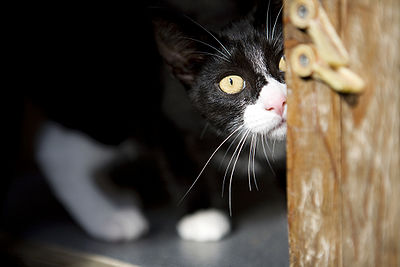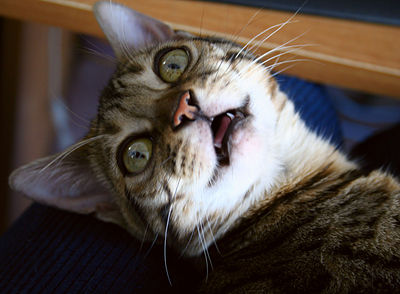
We usually hear of separation anxiety in dogs, but cats can become upset when left too even if other pets are in the home. Cats may not demonstrate their anxieties the same way as dogs, but nevertheless, some are stressed.
Separation anxiety occurs when there is a feeling of being abandoned or a fear of being left alone.
When you are preparing to leave the house, you probably have a specific routine. Your cat senses your feelings even before your preparation and can begin to show signs of stress.
Cats are usually not destructive although sometimes furniture or doors will have scratch marks. But they will exhibit signs of upset. Your cat may not eat, may try to follow you out or cry when you leave. Some cats will urinate on articles of your clothing, your bedding or other inappropriate places. Cats often groom themselves so vigorously that they leave bald spots.
Here are some tips to help with a cat who displays separation anxiety.
- Hide some treats in toys and scatter them around the house.
- Leave the TV or radio on with low volume.
- Place a scratching post or chair or table near a window so your cat can enjoy watching the happenings outdoors and won’t feel so isolated.
Try training your cat to accept your leaving without stressing by going out for a few minutes, then coming back in. Keep extending the time you are out so the cat realizes you will always return.
If your cat doesn’t respond and remains anxious, you may want to consult with an animal behaviorist.
Before attributing your cat’s behavior to separation anxiety, have him/her examined by the vet to make sure there is no underlying medical condition that is the cause.


